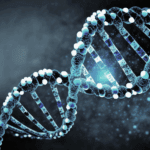Imagine your heart is a pump, and your blood vessels are the pipes carrying water to every part of your house (aka your body). Now imagine if that water was being forced through the pipes with way too much pressure—eventually, things might start to leak, burst, or just wear down. That, in essence, is high blood pressure.
Medically speaking, blood pressure measures how hard your blood is pushing against the walls of your arteries. A healthy blood pressure reading is typically below 120/80 mm Hg. The top number (systolic) shows the pressure when your heart pumps. The bottom number (diastolic) shows the pressure when your heart is resting between beats.
Here’s the tricky part: high blood pressure, or hypertension, doesn’t usually come with obvious symptoms. You could walk around feeling fine while your cardiovascular system is slowly being put under pressure—literally. Left unmanaged, high blood pressure can lead to a whole lineup of health problems, including:
- Heart attack
- Stroke
- Kidney disease
- Vision loss
- Cognitive decline
Yikes. So if you know your numbers are high, don’t panic—but definitely take action.
The Most Important Thing to Avoid
Ready for it? The #1 thing to avoid isn’t just one food. It’s ignoring the power your diet has over your blood pressure.
Many people don’t realize just how big of a role nutrition plays in managing hypertension. It’s not about following a strict, joyless eating plan—it’s about making smarter everyday choices that support your body’s natural balance. And yes, these changes really do work.
Think of it like this: every forkful is either helping your heart relax or giving it more work to do. The more often you make heart-friendly choices, the more your blood pressure thanks you for it.
Read more: New Investigation Reveals Deadly Side Effect Linked to Popular Weight-Loss Drugs
The Salty Truth: Cut Back on Sodium
Let’s start with the elephant in the kitchen: salt. Specifically, sodium—the sneaky mineral in salt that causes your body to hold onto water, which increases blood volume and, you guessed it, raises blood pressure.
It’s not just about the saltshaker. In fact, most sodium in our diets comes from packaged and processed foods—not the salt you sprinkle at the table. That includes:
- Canned soups
- Deli meats
- Frozen dinners
- Cheese slices
- Sauces and condiments
- Store-bought bread and baked goods
Even sweet snacks can hide sodium. (Looking at you, muffins and cereal bars.)
The American Heart Association recommends that folks with high blood pressure stick to 1,500 mg of sodium or less per day. That’s about two-thirds of a teaspoon of salt in total—across the whole day.
Sodium-slashing tips:
- Read food labels like a detective. Look for less than 5% of Daily Value (DV) per serving.
- Cook at home using fresh ingredients.
- Season with herbs like thyme, oregano, rosemary, or garlic instead of relying on salt.
- Ask for sauces and dressings on the side when dining out.
Potassium: The Unsung Hero
If sodium is the villain, potassium is the plot twist your heart’s been waiting for. This mineral helps your body flush out excess sodium through your urine and relaxes your blood vessel walls—both of which can bring your blood pressure down.
Doctors and dietitians recommend 3,500 to 5,000 mg of potassium daily for people trying to prevent or manage high blood pressure. But where do you find it?
Some potassium-rich MVPs include:
- Bananas (the classic)
- Spinach and kale
- Sweet potatoes
- Beans and lentils
- Oranges and orange juice
- Cantaloupe and apricots
- Yogurt (go low-fat!)
- Chicken breast
- Soybeans and edamame
- Raisins and prunes
The easiest way to get more potassium? Eat more plants. The goal is around 4½ cups of fruits and vegetables each day—and no, potatoes covered in cheese don’t count (nice try, though).
Read more: This Is How Much You Need to Walk to Cancel Out a Full Day of Sitting
Take Back the Kitchen: Cook at Home More Often
Restaurant meals may be convenient, but they often come loaded with sodium and hidden fats. A single fast-food meal can deliver more than 1,300 mg of sodium, which leaves little room for anything else that day. Cooking at home doesn’t mean you have to become a chef—it just means you gain control over your ingredients.
- You can use fresh, whole ingredients like vegetables, lean proteins, legumes, and whole grains.
- You can swap out salt for flavorful spices and herbs.
- You can portion meals to suit your actual needs—not the oversized restaurant standard.
Don’t want to give up dining out entirely? You don’t have to. Just:
- Check online nutrition info before ordering.
- Ask for steamed, grilled, or baked options instead of fried.
- Skip heavily sauced or breaded items.
- Order veggies as a side—hold the salty butter.
Consider These Two Blood-Pressure-Friendly Diets
Two eating styles consistently earn gold stars for lowering blood pressure:
1. DASH Diet
Dietary Approaches to Stop Hypertension
Created specifically to help lower blood pressure, DASH is all about balance. It encourages:
- Plenty of fruits and vegetables
- Whole grains
- Lean protein (like fish and chicken)
- Low-fat or fat-free dairy
- Minimal red meat, added sugars, and sodium
It’s rich in potassium, calcium, magnesium, and fiber—all nutrients that play a role in heart health.
2. Mediterranean Diet
This isn’t a “diet” in the traditional sense—it’s more of a lifestyle. Inspired by traditional foods from countries like Greece, Italy, and Spain, this plan features:
- Lots of vegetables and legumes
- Whole grains
- Healthy fats (especially olive oil)
- Nuts and seeds
- Moderate amounts of fish, poultry, and dairy
- Limited red meat and processed sweets
The standout ingredient here is extra virgin olive oil, known for its heart-protecting polyphenols.
Beyond the Plate: Lifestyle Habits That Support Lower Blood Pressure
Eating well is a major part of the equation—but it’s not the only part. Your daily habits also shape your blood pressure.
Here are six things you can start doing (or keep doing) today:
1. Move Your Body
Regular physical activity strengthens your heart so it can pump more efficiently with less effort. Aim for at least 30 minutes a day, five days a week. Even brisk walking counts.
2. Manage Stress
Stress causes temporary spikes in blood pressure—and chronic stress may keep it high. Deep breathing, meditation, journaling, walking in nature, or even listening to music can help.
3. Quit Smoking
Tobacco harms blood vessels and speeds up plaque buildup. If you smoke, quitting is one of the most powerful things you can do for your heart.
4. Sleep Well
Your body resets while you sleep. Poor sleep can lead to higher pressure. Aim for 7–9 hours per night, and talk to a doctor if you snore or wake up gasping.
5. Reach and Maintain a Healthy Weight
Excess weight puts more strain on your heart. Losing even 5–10 pounds can make a noticeable difference in your numbers.
6. Take Medications as Prescribed
If your doctor prescribes blood pressure medicine, take it exactly as directed. And keep your appointments for check-ups—this helps make sure everything is on track.
Read more: Study Shows These Sports Provide Greater Benefits Than Running or Swimming
Final Thoughts: You’ve Got More Power Than You Think
Living with high blood pressure doesn’t mean your life is over. It just means your body’s asking for some help—and you’re fully capable of giving it.
The biggest mistake? Thinking your daily habits don’t matter. But they do. Each healthy swap, each walk, each salt-free meal—it all adds up. And the results are often better than you’d expect.
Need more support? Ask your doctor if working with a registered dietitian could help. They can design a personalized plan that works with your preferences, lifestyle, and schedule. No fad diets. Just real food, smart strategies, and long-term results.










